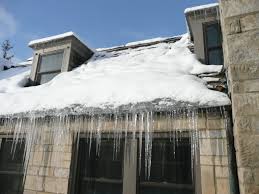PART TWO-Painting a Textured Ceiling

This process in and of itself has caused many people problems, pain and cost. You see the dirty little secret is that 95% of textured ceilings are installed incorrectly when the house is built. All manufacturers of sheetrock, joint or patching compound and texture recommend that new sheetrock is primed prior to installing texture. This step is usually skipped. In modern home building, ceilings are very seldom primed prior to applying texture. This practice creates major problems when you want to paint a textured ceiling. Ceilings textures are water soluble and due to lack of a primer, they have very little adhesion to the new sheetrock. Latex paints and primers are primarily water. When the texture gets wet with the paint or primer the texture can fall off of the ceiling. This is not pretty and can cause you to have to re-texture the complete ceiling.
Make sure all walls, flooring, furniture and all ceiling hardware such as lights are covered. The most difficult items to cover are the walls. We use 1.5” OR 2” Low adhesive masking tape by the 3M Company. The tape must be installed very carefully at the wall ceiling joint. Line the tape up with the texture and firmly press the tape onto the wall. We use a narrow 1.5” putty knife to secure the top edge of the tape to the wall at the ceiling line. We leave the bottom edge of the tape loose if possible in order to tuck the plastic under that edge. We use 12’ wide plastic on a 400’ roll to cover all the walls. Again you tape the wall at the ceiling line then tuck the edge of the plastic under the bottom edge of the tape. You then unfold the plastic to cover the walls all the way down to the floor.
Ready to paint? First and foremost, test the existing texture to see if it has ever been painted, there are many ways to do this. Try a putty knife edge first, gently scrape at the popcorn texture. If it has never been painted it will fall off easily, almost like a powder. You can even scrape it off with your fingernails. If the texture seams soft like it has never been painted make a 2nd test. Get a wet sponge and carefully gently wash a very small part of the ceiling. If it turns to mud and or washes off immediately you have now confirmed that the texture has not been painted. You must prime the ceiling first before painting it and you should spray the ceiling with an AIRLESS SPRAYER. You can rent one of these at your local rental store. You really should hire a contractor at this point. If the ceilings have been painted before then most of the danger described above is passed. You may only need one coat of paint and you can roll the new paint onto the ceiling. Use a heavy nap roller ¾”-1” nap. Take your time don’t miss any spots.
Priming and Painting an unpainted textured ceiling. Call your local contractor Lake Area Painting & Decorating or rent that sprayer and learn how to use it. Suffice it to say in untrained hands you can create many more headaches than just water damage. The process and technique for rolling and/or spraying will not be discussed here.
The safest primer to use in terms of your textured ceiling not falling down is an oil based or alcohol based primer/sealer. However, if you don’t have a full face respirator you will be overcome by the fumes from the solvents. We have found in careful hands we can use a quick drying primer like (Zinsser Bulls Eye 1-2-3) or a slow drying Penetrating primer like (Zinsser-Gardz Problem Surface Sealer). When you apply these primers DO NOT OVER APPLY! If you saturate the popcorn texture it may fall. You may want to test a small area first and let it dry. This will ensure you have no problems. You want to apply a very even uniform coat. Once the primer has dried you can apply the finish paint. You don’t need expensive paint for this. Actually the cheaper the better, but make sure the color is what you want. A good product for this is Super Hide from Benjamin Moore. You can get this product at Abbott Paint and Carpet located in White Bear Lake.
Your best solution for painting your textured ceiling is to call your 5-star local painting company that has been in your neighborhood for almost 70 years, Lake Area Painting & Decorating.
Check back soon for our last blog post in the series – Removing and repairing damaged ceiling texture.

